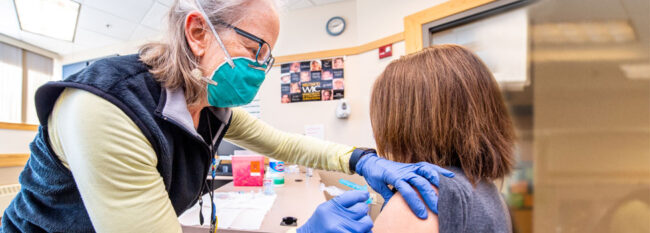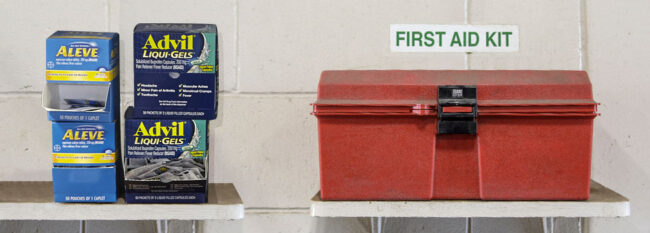Article
Tuberculosis Remains a Public Health Threat

Advances in vaccinations, screening and antibiotics have made tuberculosis a relatively rare disease in the United States. However, with past occurrences in correctional facilities, members are encouraged to review their disease control policies and procedures, and update them as necessary to maintain the safety and health of employees, inmates and the public.
What Is Tuberculosis?
Tuberculosis is an infectious bacterial disease that can be latent or active. People with latent TB typically do not show symptoms nor is the disease considered contagious at this stage. With latent tuberculosis, the individual’s immune system keeps the disease under control, and a person can have it for a lifetime without it becoming active.
However, latent TB can become active, particularly when the immune system weakens.
Persons with active TB usually display symptoms, such as coughing, bloody sputum, chest pain, fatigue or weakness, night sweats, loss of appetite and weight loss. Active TB can be spread to others when they breathe in the bacteria expelled from the infected person.
Tuberculosis is a serious disease. If left untreated, the active form can be fatal. As a result, TB is of particular concern within jails, health care facilities and public health settings, or in situations where people work closely with individuals for extended periods.
Control and Treatment
The most common tests for tuberculosis are the tuberculin skin test (also referred to as the Mantoux test), and blood tests. These tests identify the presence of the TB bacteria but do not identify whether the disease is active or latent.
Positive skin or blood tests often call for a follow-up chest X-ray or sputum test. These tests help identify the active form. Health care and correctional facilities have guidelines that require staff who interact with patients and inmates undergo annual screenings for tuberculosis.
Treatment for TB varies depending on whether it is active or latent. Both active and latent treatment requires the use of antibiotics, typically for three to 12 months. Active tuberculosis often requires a longer treatment period.
As the bacteria can become resistant to medication or return after symptoms subside, the medicine must be taken exactly as prescribed. Some treatments call for public health staff to observe patients taking the medicine to ensure that patients follow and complete the treatment.
Those with active tuberculosis are usually isolated from others to prevent the spread of the disease. Health care professionals, corrections staff or others working with isolated individuals would need to use respirators when administering treatment or other services.
Another aspect of controlling tuberculosis is the process of identifying others who may have been exposed to the affected individual, and then notifying and screening them for TB. This process includes educating individuals about the disease, and may involve testing and treatment.
The process continues until all those interacting with an affected individual(s) have been screened or judged to no longer present a risk for transmission.
Control Resources
Minnesota statutes and administrative rules apply to screening and controlling the disease at a variety of locations throughout the state, including schools, health care centers and correctional facilities.
Under these statutes and administrative rules, the Minnesota departments of Health and Corrections, and the Minnesota Occupational Safety and Health Administration defined a series of directives, policies and standards to help prevent and control tuberculosis. These directives differ in their audiences and scope but include provisions regarding training, screening, treatment and controlling the spread of TB.
The Minnesota Department of Health offers several resources that provide detailed guidance for complying with the most frequently encountered state regulations. These resources are available online at Health.state.mn.us (search for “tuberculosis”).
Issues for Corrections
Both Minnesota Occupational Safety and Health Administration (MN OSHA) and the Minnesota Department of Corrections have detailed policies and directives with regard to correctional facilities and tuberculosis (TB) control. Sheriff’s offices should review their policies and procedures, and update them as necessary to protect staff and inmates from TB exposure.
The following are some of the key provisions in the MNOSHA and Department of Corrections tuberculosis compliance and division directives:
- OSHA written policies and procedures to address serious infectious diseases, including TB
- Initial and ongoing risk assessments for TB transmission
- Required initial and annual testing of inmates and staff (with 10 or more hours of contact with inmates per week)
- Isolating offenders who exhibit symptoms of TB, pending further tests and possible isolation within a negative pressure isolation room
- Methods for TB testing and evaluation
- Proper personal protective equipment/respirator medical evaluation, fit testing and training for staff who work around affected inmates
More information is provided in these resources:
- MNOSHA compliance directive: CPL 2-2.48: Enforcement Policy and Procedures for Occupational Exposure to TB
- Department of Corrections directives:
- 180: TB Control for Applicants, Employees, Contractors, Volunteers and Students
- 520: TB Prevention and Control for Offenders
- 522: Negative Pressure Isolation Rooms
- 115: Respiratory Protection
- 113: Personal Protective Equipment (PPE)
Topics



